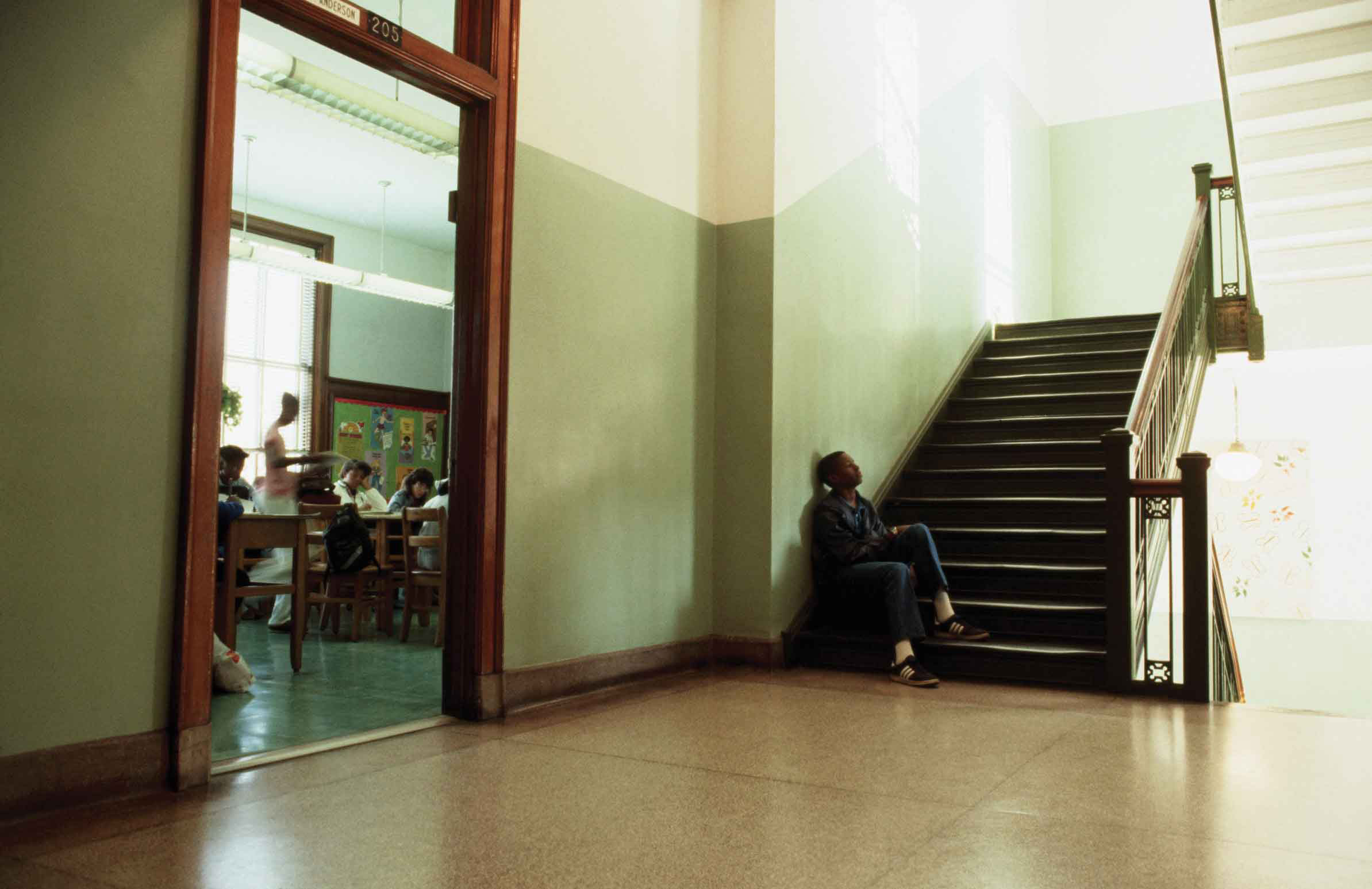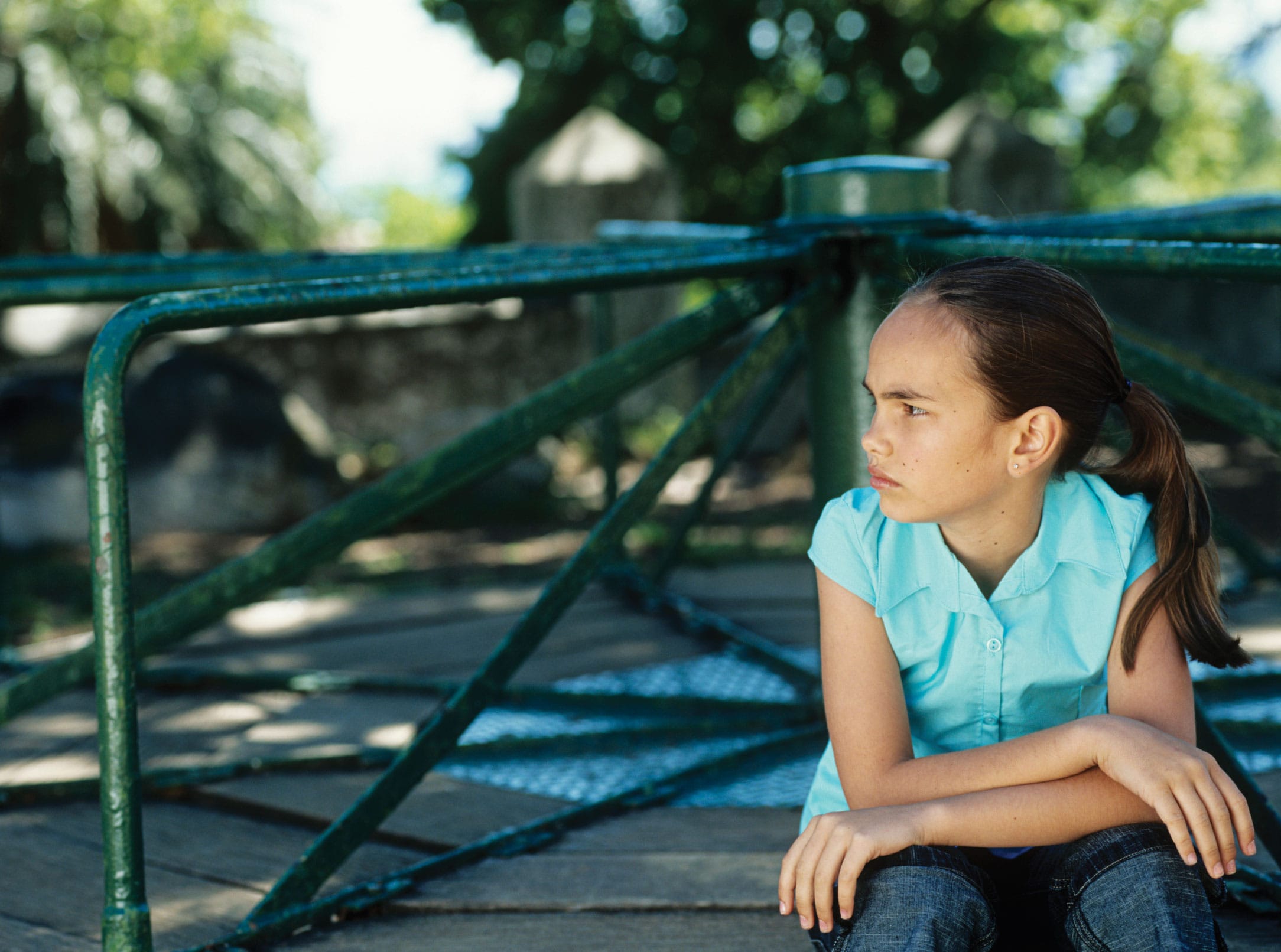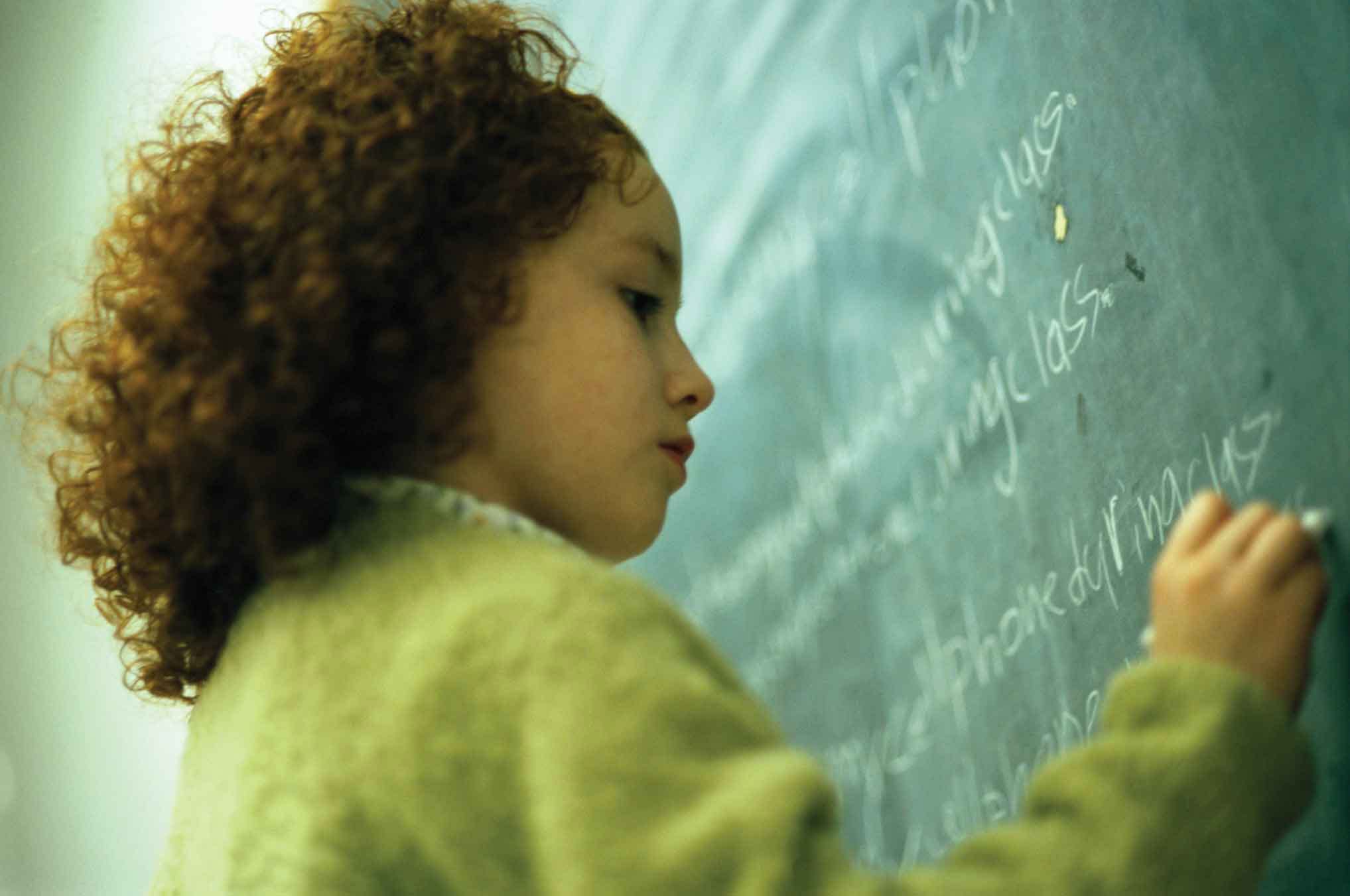Reducing Student and Teacher Dropout Rates in Louisiana
This report outlines a research-based approach to school discipline that reduces student and teacher dropout rates while improving academic performance and the overall climate in Louisiana schools.
Click here to view this report (.pdf).
This report outlines a research-based approach to school discipline that reduces student and teacher dropout rates while improving academic performance and the overall climate in Louisiana schools. It recommends that schools adopt Positive Behavior Supports, a framework that can fundamentally transform school environments by emphasizing positive behavior and eliminating harsh, zero-tolerance policies that push many vulnerable students out of school and into detention for minor misbehavior.
Eighty Students — Close To Three Classrooms’ Worth — Drop Out Of High School very school day across Louisiana. The annual average dropout rate for each grade of high school (9th-12th grades) is 6.9 percent and totals more than 14,000 students statewide. In 2006, Louisiana ranked fifth in the nation in percentage of high school dropouts. This unacceptably high dropout rate is cause for alarm for our community, economy, and public safety.
Of equal cause for alarm is our teacher dropout rate. As Governor Bobby Jindal noted in his opening address to the 2008 legislative session, “Sadly, about half of our new teachers are not in Louisiana’s public schools within five years of graduating … and one of the top reasons they list for leaving is a lack of discipline in the classroom.”
Significant numbers of Louisiana’s students and teachers are dropping out for the same reason: school discipline. Left with few alternatives for handling problems in the classroom, many schools employ discipline methods such as suspensions, expulsions, placements in alternative schools, and referrals to law enforcement, which research tells us are counterproductive and more likely to lead to student dropouts. School discipline issues are also a major factor in teachers’ decisions to leave the classroom.
Fortunately, there are tools that our teachers and administrators can use to keep our schools safe and productive so that our students and teachers stay in school. By implementing relatively simple and cost-effective evidence-based discipline practices such as Positive Behavioral Support (PBS), educators have the power to transform Louisiana’s schools.
Comprehensive school discipline reform will require the commitment of, and cooperation among, diverse education stakeholders, including state lawmakers, the Louisiana Department of Education, local school administrators, school board members, teachers, parents, and students.
Together, we can create safe and orderly classrooms and ensure that our teachers can focus on teaching and preparing our children for the future.
Louisiana’s education system is in crisis. Although Louisiana has made some progress in student achievement, Louisiana lags behind the national average in every category of student performance. “In the national achievement tests for K-12 students, Louisiana is far below most other states in every grade and in every subject area tested. According to National Assessment of Educational Progress (NAEP) tests in mathematics, for example, Louisiana students in the 8th grade score approximately one full grade behind the average student in the nation. Similar gaps show up on national tests for reading, science, geography and history.”
Louisiana consistently ranks near the bottom of the national standings in other important measures of education performance. Our high school graduation rate is among the worst in the nation. In calculating the number of 9th grade students in each state who graduated from high school in 2002, Louisiana was tied with three other states for 46th in the nation. Louisiana ranked fifth highest among states in the percentage of high school dropouts. The graduation rate for students with disabilities is even more alarming: Only 17.7 percent of students with disabilities in Louisiana graduate with a regular high school diploma.
Meanwhile, our school discipline rates consistently rank among the highest in the country. Research tells us that discipline rates and dropout rates are closely related, and that punishments like out-of-school suspension are actually counterproductive to a student’s success. Research also tells us that discipline issues are a major factor in teachers’ decisions to leave the profession.
Our students need to learn the academic skills that will enable them to become productive citizens. This can only be done, however, in classrooms where the school disciplinary program reduces problem behavior and improves the learning environment for students and teachers.
Fixing school discipline is not an impossible task. We can do it the same way we have been working to improve math: by giving teachers and schools the tools they need to discipline effectively. We can begin by implementing cost-effective programs like Positive Behavioral Support (PBS), which have been proven to reduce school discipline problems and increase the graduation rate.
Our students and teachers are capable of achieving. We need to support them with proven methods to keep our schools safe and successful. We must act decisively. We cannot allow our students to fail.
THE CONSEQUENCES OF LOUISIANA’S STUDENT DROPOUT PROBLEM
The dropout problem has had disastrous consequences for Louisiana’s future workforce. In 2000, over four-fifths of adults in the state had no college degree and one out of every four had no high school diploma. Louisiana ranked 43rd in the nation in the percentage of adults with bachelor’s degrees. In 2005, Louisiana ranked 50th in the nation in per capita income. On average, each person in the state has almost $10,000 less income than the average American. Over 60 percent of this gap in income can be attributed solely to Louisiana’s history of poor educational outcomes. The Alliance for Excellent Education estimates that Louisiana’s high school dropouts from the class of 2008 would have earned an additional $6.9 billion in their lifetimes had they graduated. Instead, they have a much higher risk of entering the juvenile and criminal justice systems.
A key contributor to the student dropout rate is school discipline. A student is more likely to drop out if she has been suspended or expelled. A student is also more likely to drop out if she has been retained for a grade — an almost inevitable consequence of multiple suspensions.
Every school day in Louisiana, an average of 464 out-of-school suspensions and an additional 475 in-school suspensions are issued. In 2000, Louisiana reported a total of 77,945 suspensions and 5,549 expulsions to the U.S. Department of Education. The 10.8 percent out-of-school suspension rate was the third highest in the nation. These numbers have only continued to rise. While Louisiana’s public school enrollment decreased by 9.2 percent between the 2001-2002 and the 2006-2007 school years, the number of out-of-school suspensions increased by more than 10 percent and more than 83,000 students were suspended at least once.
There are direct correlations between academic achievement and student conduct. Suspension and expulsion rates measure how successfully schools and districts manage student conduct. Generally, schools that report higher suspension rates tend to have lower student achievement. Also, students who are suspended frequently are at much greater risk of dropping out of school.24 In Louisiana, the correlation between nationally high discipline rates, high dropout rates, and low graduation rates is clearly evident.
Louisiana’s schools need better ways to deal with student discipline. Our children’s academic and personal growth, as well as the growth of Louisiana’s economy, depends on it.
THE TEACHER DROPOUT PROBLEM
The constant pressure of dealing with school discipline issues is pushing too many of our teachers out of the classroom. In a 2005 national survey of teachers leaving the profession, 44 percent of teachers, and 39 percent of highly qualified teachers, cited student behavior as a reason for leaving. According to a 2004 national survey of middle and high school teachers, 76 percent of teachers indicated that they would be better able to educate students if discipline problems were not so prevalent.
Teacher turnover imposes significant burdens on school administrators: They must find, train, and mentor new teachers out of a shrinking pool of qualified applicants and then repeat the process each year. The departure of experienced teachers leaves our schools with less leadership and guidance for the new teachers hired to fill their void. This continual shuffle can only damage a school’s sense of community and overall performance.
We must provide our teachers with the tools and support they need in order to teach effectively. Only then can we hope to keep our students and our teachers in school.
ZERO-TOLERANCE POLICIES HARM OUR CHILDREN
Relying on the misguided notion that simply removing students that engage in problematic behavior will make schools safer and more productive learning environments, too many administrators and school boards have resorted to a standardized “zero-tolerance” approach to school discipline. Under such policies, schools utilize mandatory exclusionary punishments for a wide range of misbehavior, rather than taking circumstances into account in deciding whether and how to punish the child. This one-size-fits-all approach to school discipline is ineffective: Zero-tolerance policies fail to address the underlying causes of misbehavior and instead only exacerbate existing problems.
All relevant research, including a recent study by the American Psychological Association, proves that zero-tolerance approaches do not result in safer, more orderly classrooms. Studies have found that 30 to 50 percent of suspended students will continue to misbehave, suggesting that suspensions do not deter future disruptive behavior in a significant percentage of students. In one study, researchers concluded that “for some students, suspension functions as more of a reinforcer than a punisher.” Dismissal from school is actually a reward to those students for whom school is a constant struggle.
Students suspended from school are much more likely to engage in troublesome behavior. According to the Centers for Disease Control, “out of school” youth are significantly more likely than “in school” youth to become involved in physical fights, carry a weapon, smoke, use alcohol, marijuana and other drugs, and engage in sexual intercourse.
THE SCHOOL-TO-PRISON PIPELINE
Many youths end up in the juvenile justice system because of school-related misconduct — and not just for violent behavior. Instead of handling relatively minor disruptive behavior through traditional, non-exclusionary discipline methods like after-school detention and extra assignments, many schools are turning to the juvenile court system. School discipline referrals clog judicial dockets in jurisdictions around the state.
Not surprisingly, involvement in the juvenile justice system, with its disruption of a child’s education, is often a direct pathway to dropping out. Court involvement may hurt a student’s ability to stay in school in several ways. First, appearing before a judge means missing hours of class — weeks if the student is placed in a residential facility. Children that are frequently absent from classroom instructional time are likely to fall further behind their peers. Second, involvement in the juvenile justice system is likely to have a harmful effect on how students are treated at school as well as how the students perceive themselves and their educational potential. The detrimental effects of involvement in juvenile justice system are supported by empirical evidence: According to a recent study, a first-time arrest during high school nearly doubles the odds of a student dropping out, while a court appearance nearly quadruples those odds.
By reducing the number of students referred to the criminal justice system for minor in-school misbehavior, we can also reduce the number of students who drop out — and save our state the money it needs to educate our children — without sacrificing school safety.
It is clear that zero-tolerance policies and school discipline practices that depend on suspensions, expulsions, and referrals to law enforcement are not working. So how can a school maintain a safe and orderly learning environment that will be conducive to learning?

Nancy Sarver, Jamie Landry, Frances Smith, Chondra Noel
There Is A solution. Evidence-Based School Discipline Practices Are Available to help teachers maintain a safe and productive learning environment while ensuring that children are removed from school only as a last resort. Every teacher in Louisiana can be trained in evidence-based discipline practices, and every child can be disciplined with methods that have been shown to improve behavior. In fact, some Louisiana schools are already implementing evidence-based discipline practices with great success.
Current state law recognizes the value of PBS by requiring districts to have a model master plan for improving behavior and discipline within schools that includes, among other things, improving classroom management using positive behavior support and other effective disciplinary tools.
At least three school districts in Louisiana — Jefferson Parish, Calcasieu Parish, and Caddo Parish — are already implementing PBS on a district-wide basis. In Jefferson Parish, where PBS has been implemented the longest, there have been significant reductions in the number of students being removed from the classroom for disciplinary reasons as well as a reduction in the number of children who have been arrested at school.
SCHOOLS THAT EFFECTIVELY IMPLEMENT PBS DEMONSTRATE:
» Reduced office referral rates (and, consequently, suspension and expulsion rates) by up to 50 percent per year
» Increased instructional time as a result of the reduced office referral rates
» Improved attendance and school engagement
» Improved academic achievement
» Reduced dropout rates
» Reduced later delinquency and drug use
» Improved school atmosphere
Positive Behavioral Support (PBS) is a research-based method for improving student behavior and creating a safe and productive school climate. PBS is:
Proactive: All students are taught the critical social skills needed for success. PBS schools set clear expectations for behavior, acknowledge and reward appropriate behavior, and implement a consistent continuum of consequences for problem behavior. Students with serious or chronic behavior problems receive behavior assessments to determine the causes of their behavior, and these assessments help staff develop individualized interventions and specialized behavior supports.
Comprehensive: PBS is employed throughout the entire school, including the cafeteria, the buses, and the hallways. All school personnel are trained in PBS and are continually supported in implementing it.
Data-Driven: Schools rely on data, tracked most easily in the form of office referrals, to both develop and modify their PBS approach (e.g. “When/where do most office referrals occur? Which teachers are referring the most students? Which students are most often referred?”). PBS teams use this data to design specific interventions to head off problem behavior before it occurs and to confirm that those interventions were effective.
Tertiary Interventions are specialized, intensive strategies used to address the most challenging students’ chronic academic and behavioral difficulties. Using Functional Behavior Assessments to identify the function of a student’s difficult behavior and devise ways to prevent it, school officials create a behavior support plan and provide counseling to address specific student needs. This applies to about 5 percent of students. Secondary interventions address the needs of more challenging students who exhibit difficult behavior that limits their academic and social success.
Secondary Interventions include behavioral contracts, conflict resolution training, self-management strategies, and “check-and-connect” programs where students check in with a concerned staff member every day. This applies to about 15 percent of students.
Universal Interventions, such as school-wide social skills training curricula and school rule education campaigns, prevent the development of problem behaviors and apply to all students.
PBS is recognized under federal as an important tool in addressing the behavioral needs of students. The Individuals with Disabilities in Education Act (IDEA) encourages the use of PBS to reduce the need to suspend or expel students with disabilities. The U.S. Department of Education’s Office of Special Education Programs (OSEP) operates a National Technical Assistance Center that promotes PBS and provides capacity-building information and technical support to states and school districts.
PBS is currently practiced to one degree or another in approximately 7,100 schools across the country, including 809 Louisiana schools. It is recommended or required by statute in three states and is the subject of statewide initiatives or school/university partnerships in all 50 states, including Louisiana. When implemented properly, PBS has shown positive effects in elementary, middle and high schools, and has proven to be effective in schools with high percentages of at-risk students.
Special education students who were suspended from school for more than ten cumulative days — an important indicator for later dropout — plummeted by 90% after two years of PBS. The number of school-based arrests has also dramatically declined — 26% for Special Education students and 36% for General Education students between the first six months of the 2007-08 school years and the first six months of the 2008-09 school year.
The success of PBS has been clearly demonstrated in Jefferson Parish. After two years of district-wide PBS, the out-of-school suspension rate plunged 51% for Special Education students; the rate dropped 24% for General Education students after one year. In-school suspensions have also dramatically decreased.
These stories of students from around the country illustrate the proven ways in which schools using PBS address behavioral problems. Sid’s story shows the universal or primary prevention methods that PBS schools use to reduce behavioral problems in the student body as a whole. Mary’s story reflects the more intensive, secondary interventions used to address the smaller group of students for whom primary prevention methods do not suffice. Terry’s story demonstrates how PBS schools address the behavior of the handful of students who require the most intensive, individualized interventions for their serious behavior problems.
Sid is a seventh grade student at a middle school in the largest city in his state. For several years it was a school in crisis, with declining test scores, rising truancy rates, an increasing number of out-of-school suspensions, as well as an increase in the rate of juvenile crime in the neighborhood. Sid was one of the students who had more than his share of absences and discipline referrals, and he was suspended three times in the sixth grade. But last year the school began using PBS. The school’s PBS leadership team has helped staff make strategic changes. Staff began the school year by establishing a uniform set of expectations for school behavior. Teachers taught these expectations to students, rewarded students who complied, and developed consistent, appropriate consequences for those who did not. Another strategy the staff learned was how to use school wide discipline data to make intervention decisions when dealing with student misbehavior. Sid and his fellow students have benefited from these changes. This year he has had only two office discipline referrals, and his attendance has been much more regular. The increased time he has been in class also seems to have helped him academically: His achievement test scores have improved from the 30th percentile overall to the 50th percentile.
In the past two months, Sid received two office discipline referrals for misbehaving in the hallways. The PBS leadership team noted a general increase in office discipline referrals from school hallways. At a staff meeting, it was agreed that, in hallways, the school-wide expectation to “respect others” should be defined as “stay to the right” in hallways and on stairs. They further agreed that during transitions, teachers would stand outside their doors acknowledging students who follow this rule and correcting those who do not. In the two weeks since this procedure went in effect, discipline referrals from the hallways dropped from an average of eleven per day to an average of two. Sid was corrected once for failing to meet the expectation, and since then has received only praise for his behavior in the hallways.
Mary is a student of limited English proficiency at a junior high school that is still learning how to effectively teach beyond the language barrier. Given her age group, the cultural and communication barriers between Mary and her school, and relative junior high school anonymity, it is possible that Mary’s peer relations are sometimes more important to her than those with her teachers.
Mary’s school began implementing PBS this year and, while they have seen disciplinary referrals go down, they have seen the number of tardies increase. After trying a couple of school-wide interventions, the school began to identify the students who were consistently tardy. Mary and her friends were among those identified. The school set up a “Check & Connect” program in which Mary and 13 other students met one-on-one with the same teacher or administrator once or twice a week. They used the time together to check in, talk, outline academic goals, and review and set goals for cutting down on the instances of tardiness. At the end of 5 weeks, 10 of the 14 students who had been consistently tardy were no longer showing up to class late.
Mary, as well as some of her friends, had built a positive relationship with her school and teachers. She said that, when her other friends were running late, she began to leave them behind because she wanted to “pass the program” (or, do well in the targeted intervention). Mary’s grades have improved in the process and she now tells people that she wants to be a teacher.
Terry is a fifth grader who was diagnosed with bipolar disorder and has been on medication for the past three years. His school is implementing PBS, but in spite of primary and secondary prevention efforts, Terry continues to receive office discipline referrals for aggressive behavior toward peers. Early in the school year, he was suspended for threatening another student.
A Behavior Support Team was assembled to address Terry’s problem behavior. A functional behavioral assessment was conducted to identify events that seem to predict his aggressive behavior. Based on this assessment, it was hypothesized that Terry engages in aggressive behavior (verbal threats) in order to escape or avoid being teased by other students. Terry’s Behavior Support Team then developed an individualized behavior intervention plan for him. Part of this plan involves teaching Terry alternative ways to respond to teasing (walking away, reporting to a teacher). Teachers and other school staff watch Terry’s interactions with peers in classrooms, hallways, and other commons areas. When they see him using appropriate alternative responses to peer teasing (his “replacement behaviors”) they give him praise, and Terry gives himself five points on his self-monitoring card. If they see him respond to teasing by making verbal threats, staff immediately correct him (as well as the other student), and Terry deducts five points on his self-monitoring card. Another part of the plan was for a peer mentor (a student with high social status) to accompany Terry around the building during the first two weeks of the intervention. This student (selected daily from a group of trained volunteers) informally coached Terry and other students in using appropriate social skills. After two weeks, the team decided that it wasn’t necessary for the peer mentor to be with Terry at all times. Instead, the students who served as mentors made it a point to interact with Terry in common areas, thereby modeling appropriate social interactions for other peers. It has been six weeks since this plan was initiated, and Terry has not received any office discipline referrals for aggressive behavior. Moreover, he has been observed to interact more frequently and positively with peers.
The good news is that it is possible to maintain a safe and productive school climate without removing students from the classroom. Out-of-school suspensions, expulsions, removals to alternative schools, and referrals to the criminal justice system can all become a less central part of school discipline by taking the following actions. Our schools and our children deserve nothing less.
1. Encourage school districts to implement school-wide PBS in every school.
2. Advocate for full funding for PBS and other evidence-based school discipline methods in the state legislature.
3. Ensure that schools in your community and around the state make behavioral expectations clear to students and provide praise when they meet those expectations.
4. Ensure that schools in your community and around the state reserve disciplinary removals for only the most serious and severe of disruptive behaviors, and define those behaviors explicitly.
5. Advocate at the local and state level to replace one-size-fits-all disciplinary strategies like zero-tolerance with graduated systems of discipline, where consequences are geared to the seriousness of the infraction.
6. Ensure that schools in your community and around the state incorporate alternative corrective strategies into their codes of conduct to provide options other than suspensions, expulsions, and removals to alternative schools. Some of these strategies are listed on the next page.
7. Ensure that schools in your community and around the state are helping students who are struggling academically and/or behaviorally with tutoring, counseling, and other interventions.
8. Encourage collaboration among schools, parents, juvenile justice officials, and mental health officials to develop an array of alternatives for challenging youth.
9. Collect and analyze data on school discipline to better understand and address safety and disciplinary concerns in schools
10. Use this publication and the American Psychological Association’s research on zero tolerance policies46 to begin a discussion about effective school discipline in schools in your community and around the state.
-
Conference with student to provide him/her with corrective feedback.
-
Re-teach behavioral expectations.
-
Mediate conflict between students or students and staff, and assign appropriate consequences.
-
Create behavior contracts that include expected behaviors, consequences for infractions, and incentives for demonstrating positive behaviors.
-
Student completion of community service tasks.
-
Development of a home/school communication system.
-
Reflective activity about the offense and how it affected the student, others, and the schools.
-
Loss of a privilege.
-
Schedule adjustment.
-
Create a check-in/check-out plan for the student with a caring adult in the school.
-
Require daily or weekly check-ins with an administrator for a set period of time.
-
Refer student to counselor, social worker, interventionists, or Teacher Support Team.
-
Arrange for the student to receive services from a counseling, mental health, or mentoring agency.
-
Work with the student to choose an appropriate way for him/her to apologize and make amends to those harmed or offended.
-
After-school detention or high quality in school suspension, during which the student receives assistance with academics and behavioral issues.
In addition to PBS, other research-based programs can also help create a positive learning environment and address behavior problems without resorting to exclusionary methods like suspension and expulsion. These programs need not replace PBS; they are usually part of a broader PBS program. PBS provides a framework that improves implementation of most of these programs.
Conflict Resolution
Fighting is among the most common of disciplinary infractions. Many schools across the nation have begun to implement conflict resolution programs that teach students the attitudes and skills they need to avoid violence, including empathy, perspective, and improved communication skills. Students can be trained to act as peer mediators, helping other students naturally defuse conflicts in the halls and classrooms. Also, they can more formally help other students in conflict come to cooperative resolutions in mediation sessions. School-wide conflict resolution efforts have shown positive outcomes, including teacher reports of decreased physical violence and increased student cooperation, as well as lower suspension and expulsion rates.
For more information:
Second Step Violence Prevention program
Resolving Conflict Creatively
RESTORATIVE PRACTICES
Restorative practices are a systemic approach to maintaining positive relationships and mutual respect that focuses on (a) establishing processes in classrooms and school-wide that promote positive, non-violent ways to deal with anger, resentment, and other negative emotions that disrupt the learning process and (b) repairing the harm done to individuals and the community as a result of negative behavior. Restorative practices are an effective approach for uncovering and resolving the underlying causes of misbehavior. At a high school in West Philadelphia, suspensions dropped by 50 percent during the first year of using restorative practices, and in thirty one high schools in Chicago, a peer jury program based on restorative principles helped students peaceably and effectively resolve disciplinary incidents that would have otherwise resulted in over 1,000 days of learning lost to suspension.
For more information:
International Institute for Restorative Practices
Reassessing School Climate: Restorative Justice and School Discipline
Cassandra W. Adams, Director,
Cumberland Community Mediation Center
Samford University,
800 Lakeshore Drive, Birmingham, AL 35229
(205) 726-4257 (Tel); (205) 726-2397 (Fax)
MENTORING
Mentoring helps alienated students re-connect to school and to the community through tutoring, discussions, field trips, or community service. Evaluations of mentoring programs show that, when done right, they can decrease students’ violent attitudes, raise self-esteem and career aspirations, and improve social skills and academic achievement.
For more information:
National Mentoring Partnership
Anger Management
The purposes of anger management are to assist students in learning how to understand and manage feelings of anger and to provide them with tools to avoid escalating negative feelings that lead to confrontations with others. Effective programs have led to decreases in disruptive and aggressive behavior, increases in pro-social behavior, better social acceptance by peers, and increased on-task behavior.
For more information:
Elementary and Middle Schools Technical Assistance Center
BULLYING PREVENTION
Evidence-based bullying prevention programs report significant reductions in bullying, fighting, vandalism, and truancy, along with an increase in general student satisfaction.
For more information:
Bullying Prevention Program
National Bullying Prevention Campaign
ANTI-TRUANCY PARTNERSHIPS
As any teacher knows, exclusionary discipline methods are not the only factors keeping our students out of school. Almost every school in the state also struggles with truancy. Obviously, a critical step in creating a positive learning environment is making sure that all students get the help they need to come to school every day, on time and ready to learn. Truancy reduction programs focus on this specific challenge, and in doing so become part of the spectrum of programs necessary to build healthy schools.
Just as with PBS, there is no cut-and-paste approach to truancy reduction: Each school and district shapes their program to respond directly to local needs. But effective truancy reduction programs share a few important qualities. First, effective programs involve intense collaboration between schools, families, and other stakeholders. Second, effective truancy programs target the causes of a student’s attendance problem. Instead of simply imposing sanctions for the behavior itself, the best anti-truancy partnerships work creatively and collaboratively to address the underlying factors leading to truancy. Third, truly successful truancy reduction programs do not exclude the children and families who are most in need of help, such as children who are already court-involved. Good programs cannot be limited to the easiest cases.
For more information about a few highly successful truancy reduction programs:
CASASTART (Court-Appointed Special Advocates Striving Together to Achieve Rewarding Tomorrows)
Communities in Schools
Abolish Chronic Truancy
Truancy Intervention Project
Truancy Reduction Program









